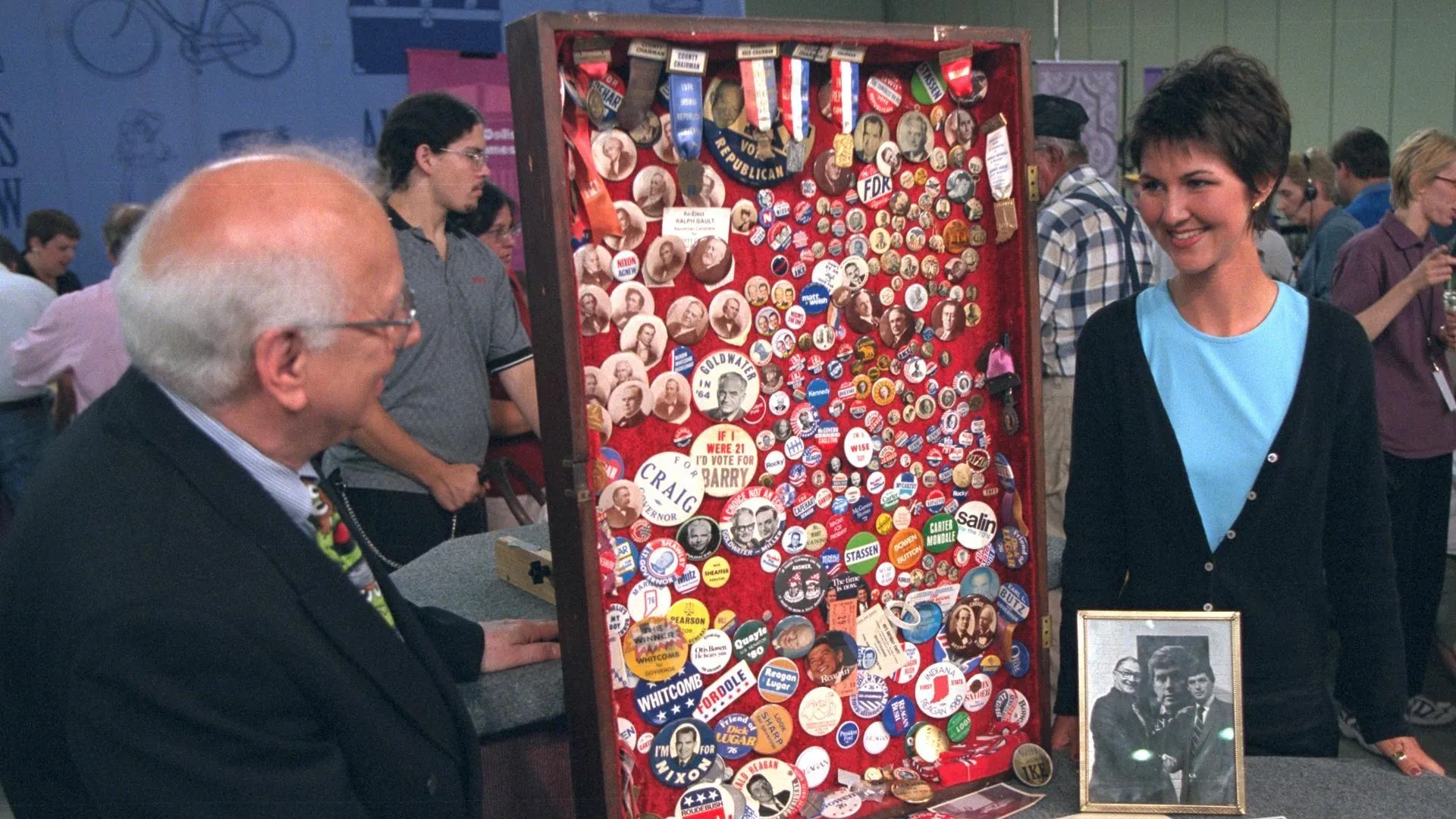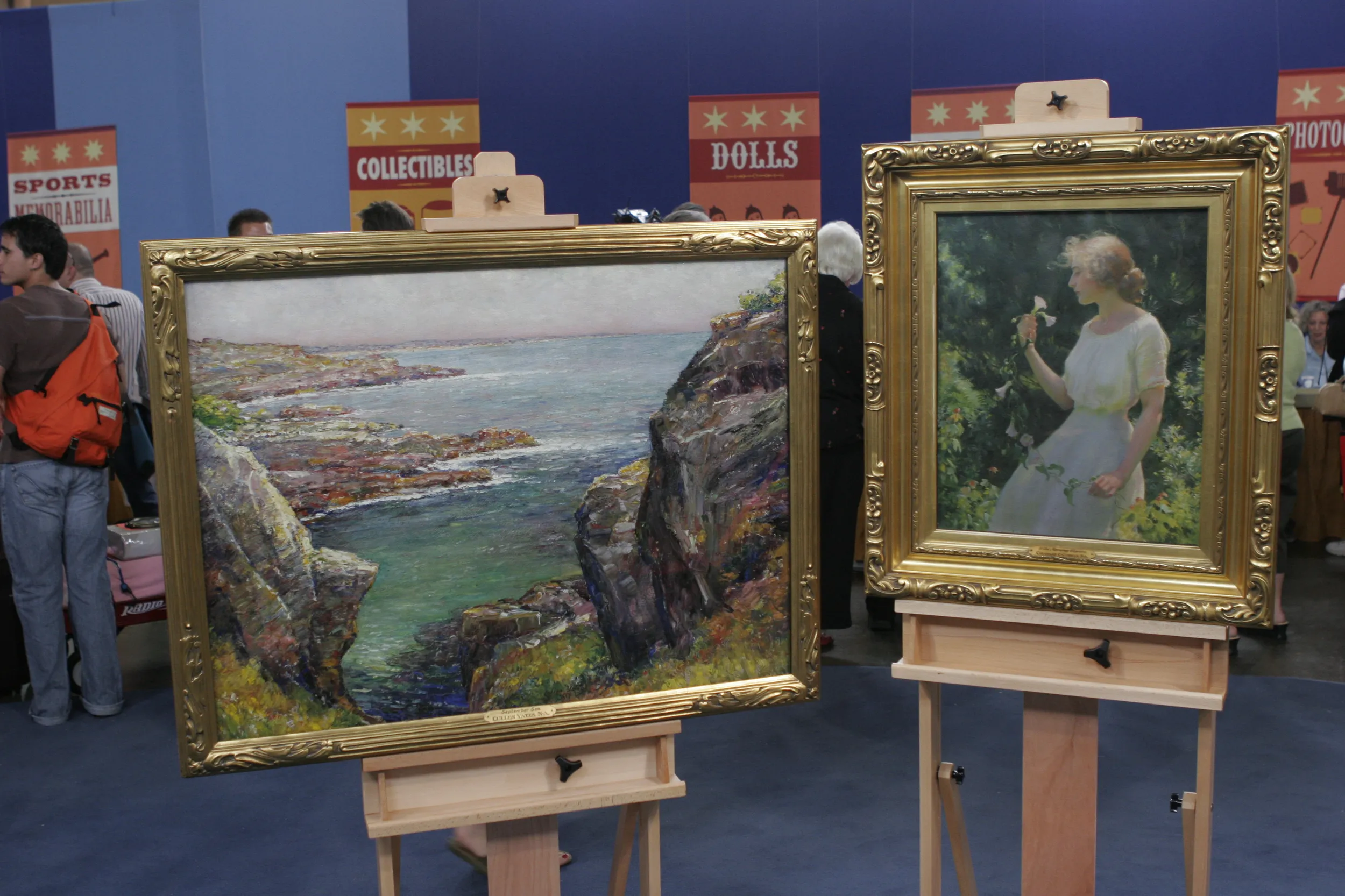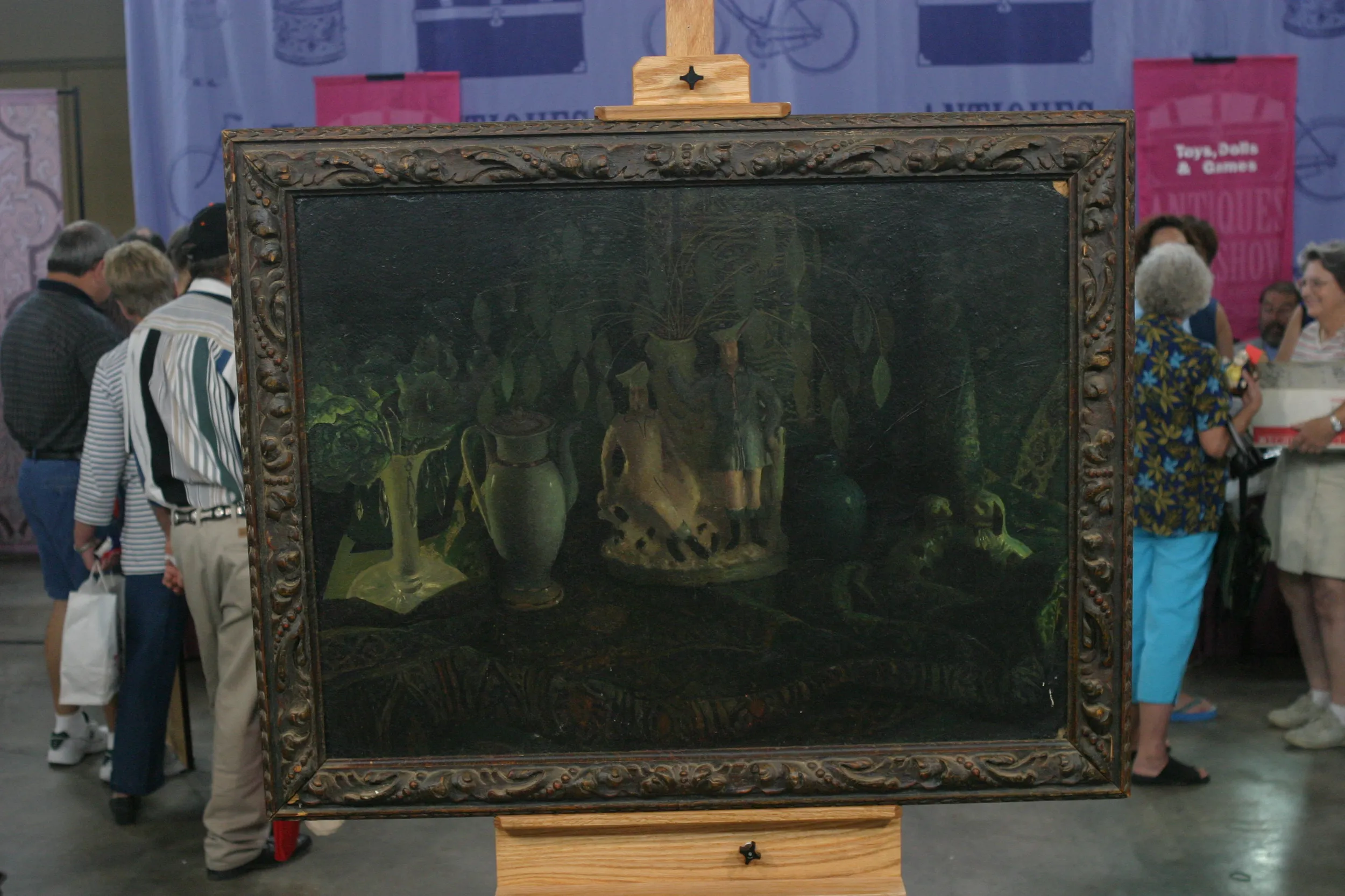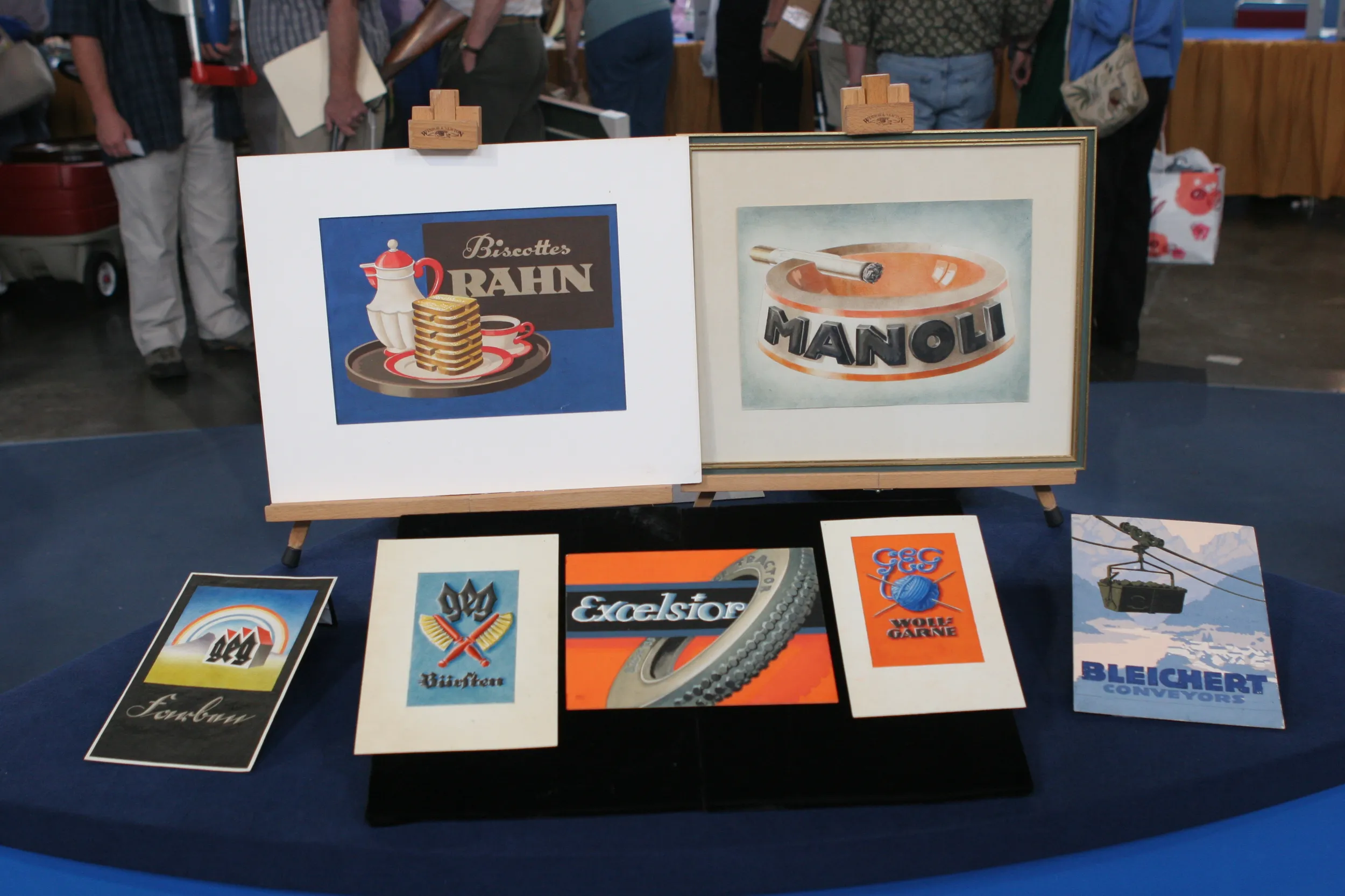GUEST: This is a miniature portrait of Samuel Osgood.
APPRAISER: Right.
GUEST: He was my great-great-great-great-great-grandfather, first postmaster general of the United States under Washington.
APPRAISER: And how did you know that?
GUEST: Just what family has told me and documentation that's in the little folder here.
APPRAISER: These little... they tell you exactly who it is?
GUEST: Right.
APPRAISER: It's actually a watercolor on a very thin sliver of ivory, and that's how portrait miniatures were done. This took the place of your photo in the wallet, you know. A miniature would be something you'd take with you of your relative, your loved one. And another thing they did to personalize it, on the back, they would put a, um... lock of your loved one's hair. The hair is braided in quarters. You see this hair is very brown, but when you turn it around, we can see that this brown hair is actually very gray. It's not that he was gray, but this was the powder in his hair. They would powder their hair much like they powdered a wig. But it's a very personal memento. Do you have any idea of who did it?
GUEST: I don't.
APPRAISER: Well, one of the things you may want to do at some point is take it to a jeweler, and they can pry that open, the gold rim around there, and take a look at the back. If it's signed, that might tell you...
GUEST: It would be on the back?
APPRAISER: Yeah, who the artist might be. This is a very important piece of American history. Osgood is the first postmaster general to George Washington. He's a member of the Continental Congress, and he led a regiment of militiamen at Lexington and Concord, so he has a very long history through the Revolution and into the succeeding administration. He then moved on to New York and became a member of the state assembly and supervised the internal revenue for the district of New York, so he was a very important fellow. I would say, without any artist, just because this is Samuel Osgood-- we have absolute provenance and it's your history, we know who it is-- I would say this would be worth about $10,000 to $15,000.
GUEST: Really?
APPRAISER: Now, if you identify the painter of this, an important early American miniaturist, it could be as much as $5,000 or $10,000 more, maybe $15,000 to $20,000.
GUEST: Wow. That's wonderful.












